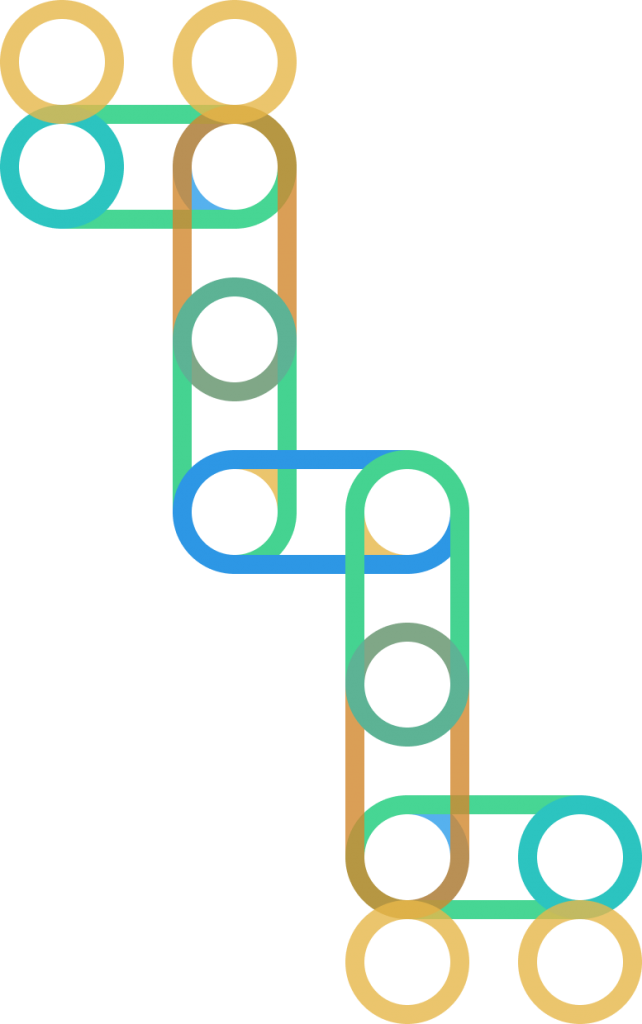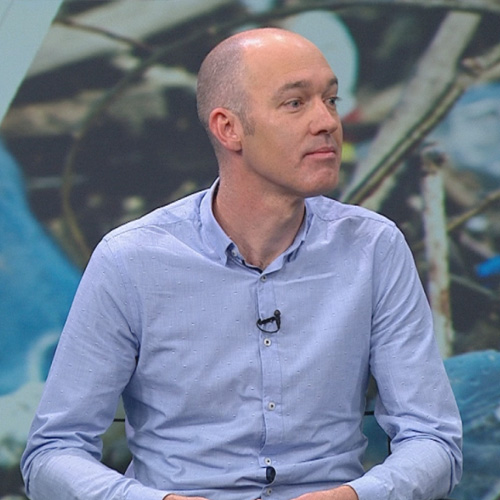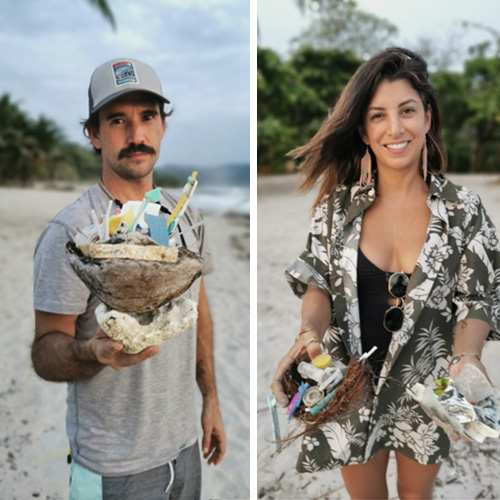
Reuse, reduce and recycle is the popular mantra and PET’s place at the center of a complex mix of closed loop recycling and reuse systems is a key part in the material’s transition to a greener future.

Innovations and systems that enable PET to bring an end to the polymer’s reliance on virgin fossil fuel stocks are crucial for the material to transition to a more regenerative role, reducing plastic pollution and other forms of waste in the future.
In the area of packaging – which currently accounts for 40% of the total amount of plastic produced each year, PET has cemented its place as arguably the most sustainable packaging material – the rise of reuse systems is an important tool in consumer goods retailers’ efforts to close the loop on plastic waste.
The reuse model has been championed by, amongst others, the Ellen Macarthur Foundation which has rewarded and showcased companies like Chilean startup, Algramo, for both its positive environmental and social impact. Other companies seeking to replace single-use plastic uses with reuse systems include TerraCycle’s direct-to-consumer reuse solution, Loop. In the private sector, large retailers like Kroger and multinationals like Unilever are pioneering the use of these reusable systems.
The approach is also being widely embraced by governments across the world as one of a raft of solutions to combat the region’s plastic waste and reduce greenhouse gas emissions.
New regulations have recently been passed in Europe where, historically the use of reuse systems have proved successful in particular in countries like Germany, which has maintained a high adoption of bottle return systems.
One of the best examples of reuse systems being deployed in the world is Genossenschaft Deutscher Brunnen’s (GDB) mineral water bottling system which now uses a mix of refillable PET and glass bottles for a pool of German mineral water companies. The pool has more than 1 billion bottles and 100 million crates in circulation that make it extremely easy for consumers to return bottles to virtually any supermarket.
The supermarkets then return the empties to the nearest bottling company, where they are washed and refilled. Compared with stand-alone reusable systems, the pool system cuts transport distances, reduces the number of lorries on the roads and lowers carbon emissions. The system has a return rate of 99%.
PET Replacing Glass With Greenhouse Gas Benefits
Highlighting PET’s future importance in these types of system, the pool has been shifting slowly towards using reusable PET bottles, which are 50% lighter than their glass alternatives, further reducing the reuse system’s carbon footprint. In 2020, around 2 billion PET bottles were filled using the system.
German packaging company, ALPLA supplying the PET bottles to the pool, has learned important lessons from its implementation with LifeCycle Analysis Studies showing that:
- The higher the proportion of recyclates in PET bottles, the lower the environmental impacts of the packaging. This is the case both for single-use and reusable solutions.
- GDB’s reusable PET bottles perform the best across all the different environmental impacts. Being pool bottles, they benefit from covering the shortest return distances as they can be returned to and refilled by any of the cooperative’s members.
- Reusable PET bottles always perform better than reusable glass bottles.
- The lower the weight of the packaging in relation to its filling volume, the lower the environmental impacts.
Other PET success stories in the reuse model include Coca-Cola’s decision to shift back to reusable bottles in Latin America and other developing nations lacking the recycling and recovery infrastructure in place in Europe. Previously deploying glass reusable systems, the world’s largest fizzy drinks company asks customers in Brazil to pay a deposit fee when purchasing soda in a refillable bottle. The customer receives a discount on their next purchase when they return the empty bottle to the store – a feature that ensures a return rate of above 90%. The bottles last up to 25 cycles and are recycled at the end of their lives. A similar system can be found in South Africa, where a pilot project was started in November 2019. Coca-Cola has also recently re-designed bottles to make them easily interchangeable between all of its brands.
The success and popularity of reuse systems in places like Germany have prompted many European countries to seek to replicate the systems passing new legislation and guidelines for their implementation.
Reuse Regulations on the Rise
In France, the Circular Economy Law and Climate Change Law set out general reuse targets for packaging (5% by 2023 and 10 % by 2027)2 as well as specific targets for retailers to dedicate 20% of their space to refill/reuse in storefronts larger than 400 m2 by 2030.
In Austria, reuse targets for beverages: 25% (2025); 30% (2030) have been confirmed. In the country, retailers are to fulfill reusable quotas for beverages in minimum 90% of their storefronts larger than 400 m2 by the end of 2025 as well as percentages of reuse for beer and bottled water of 15%; and juice, soft drinks and milk of 10%.
Spain is also planning reuse measures with ambitious targets laid down in a draft. According to the draft Royal decree, the hotel and restaurant sectors are to meet the following quotas:
- Bottled water: reuse quota of 50% in 2025 and 60% in 2030
- Beer: reuse quota of 80% in 2025 and 90% in 2030.
- Soft drinks: reuse quota of 70% in 2025 and 80% in 2030.
- Other beverages: reuse quota of 50% in 2025 and 60% in 2030.
Retailers will also have to ensure the availability of reusable packaging under the guidelines.
The trend has prompted a host of studies of the overall impact of reuse systems on polymer production and how it will complement ongoing efforts to close the loop on plastic waste with recycling activities complementing these closed loop systems.
The Rise of Reuse and Its Impact on Polymers
Timur Zilbershteyn, Principal Analyst, Chemicals and Polymers at Wood Mackenzie says the expansion of these reuse systems could reduce demand for polymers and the demands placed on the recycling sector by 12% by 2040.
“By removing the necessity for this reprocessing, reuse models – where applicable – are the more sustainable, circular solution,” he says. “A packaging value chain optimized for sustainability, would therefore look to redesign that proportion of plastic packaging that is suitable for reusable applications.”
Wood Mackenzie’s research on the subject, however, pointed to the systems being less relevant in developing countries which will limit its overall impact although Coca-Cola’s success could be a key indicator for the future in developing countries.
“The total demand for all polymers in packaging in the base scenario for 2020 is about 88 million tons, and by 2040 it is expected to grow to 162 million tons per year. The re-use scenario expects that the number will be lower, around 153 million tons, taking into account both the loss of single-use demand and the addition of reusable packaging demand,” says Zilbershteyn.
“For high-income countries, the number for 2020 is 29 million tons, and the base scenario assumes it will be about 36 million tons in 2040. In the reuse scenario, it will be about 31 million tons in 2040, reversing the growth to negative somewhere in the 2030s,” says Zilbershteyn.
To Recycle or Reuse: A Complex Conversation
To explore the merits of these systems and to understand the possible impact they could have on PET polymer production, PETCORE Europe set up a working group to look at the issue. It recently published its findings.
Sebastian Lemp, chair of PETCORE Europe’s reuse working group says reuse is going to be an important part of the mix of solutions needed to move the needle away from waste and contribute to the European Union’s efforts to move towards climate neutrality by 2050.
The implementation, however, should be done so with precaution and taking into account the local context when it comes to existing systems, in particular the effectiveness of single-use and recycling networks in the country.
“The overall objective should be to use packaging in the most circular way possible while keeping the environmental impact as low and the packaged goods as safe as possible,” says Lemp. “Any shift to reuse needs to be preceded by extensive impact assessments and must be a managed transition considering the many changes required to the different supply chains”.
“Even though the PET industry supports the scale-up of reuse systems, undifferentiated reuse quotas should be looked at objectively and with caution,” he says. “Legislation should be evidence- based and always favor the least complex, most environmentally-friendly, and most recyclable packaging solution.”
There are multiple factors that need to be weighed up before considering whether to switch to reuse, PETCORE Europe found.
“A great number of elements must be looked at, such as weight of the packaging, sales channel, transport distance and efficiency, water use for cleaning purposes, recycled material content etc. Any analysis needs to be conducted on a case-by-case basis and most probably the ideal solution lies in the combination of single-use and refillable PET bottles,” he says.
Particular caution needs to be exercised in knee jerk introduction of legislation in countries that don’t have the infrastructure in place.
Deposit Return Systems Another Viable Option
One of the reasons that may slow the expansion of reuse systems in some countries is that they are far from the optimal solution, largely because of the success of deposit refund schemes that are already producing strong results in terms of recovering single-use plastics and converting them into recycled PET (rPET).
DRS schemes are being widely adopted in some of the most progressive states in the United States as well as countries in Europe. They are a proven tool to collect high quantities of single-use beverage containers for closed loop high-quality recycling (rPET) as well as reuse schemes.
Deposit schemes systems see customers pay a small deposit when they purchase a can or a bottle, which they get back when they return the container to a collection point for recycling.
Leading systems routinely recover more than 90% of deposit containers sold. With 20 countries signing up to these schemes in Europe at the end of 2020, 136 million people are now covered by a DRS system in Europe. It is expected that by 2023 more countries, representing another 130 million people, will deploy DRS systems to complement successful curbside systems already providing strong results in places like Belgium, Netherlands and Estonia.
The conclusion by PETCORE Europe is that the presence of refill systems should be further promoted when they demonstrate an improved environmental, social and economic performance on the existing recycling arrangements.
“Refill is often presented as the only solution to reduce carbon footprint and waste. However, studies show that refill systems are not necessarily the best option from an environmental perspective,” says Lemp. “A great number of elements must be looked at, such as weight of the packaging, sales channel, transport distance, water use for cleaning purposes, etc. Considering the above, the analysis needs to be conducted on a case-by-case basis and most probably the ideal solution lies in the combination of single-use and refillable PET bottles.”
If you like this content and would like to help close the loop on plastic waste then join the AdaPETation Network by clicking on the button below.
Share it
useful links
THE HISTORY OF PLASTIC
Throughout the history of plastic, PET has been crucial in keeping food fresh with lightweight and durable packaging solutions that have helped reduce food waste for almost a century. Learn all about the invention of plastic and the important role it has played feeding people and saving the lives of humans and elephants in the adaPETation® timeline of the history of plastic.





